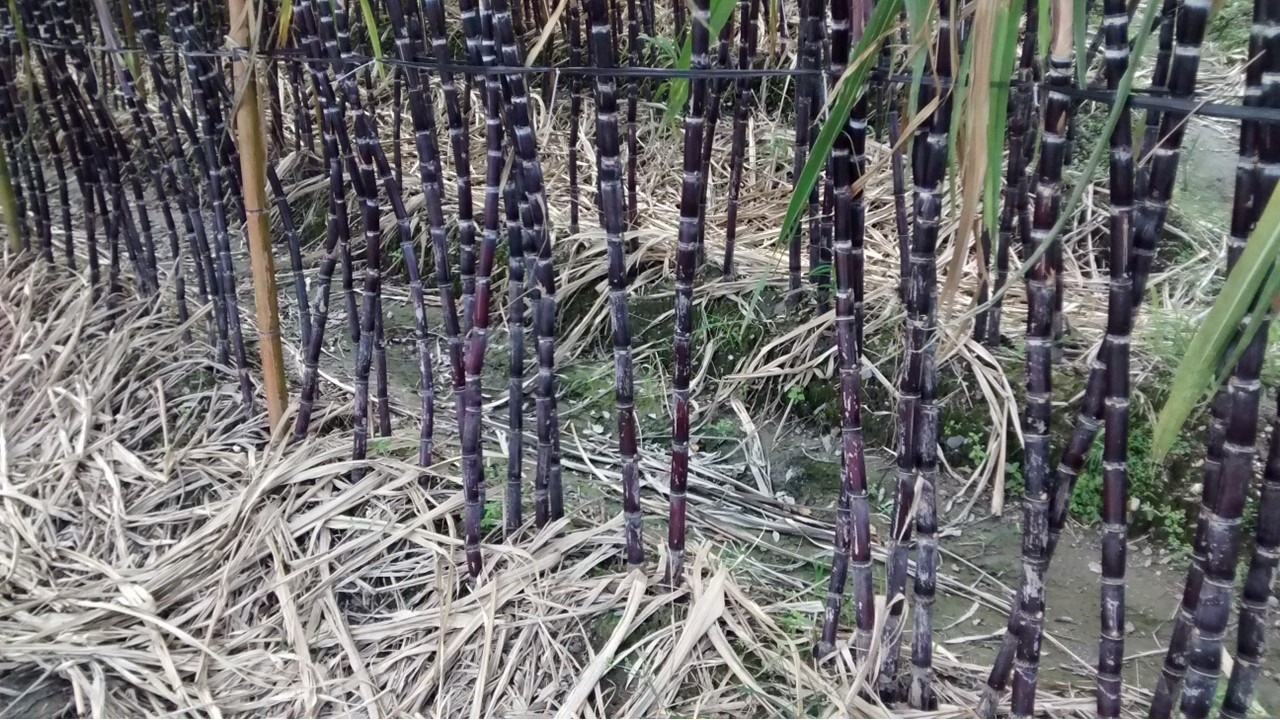Investors and consumers are more concerned about the carbon emissions of corporations under climate change. Carbon neutrality can be achieved by corporations by acquiring carbon credits from the Voluntary Carbon Market (VCM) for carbon offsetting. What are carbon credits? How can they be acquired? And what do the terms carbon allowance and carbon offsetting that are frequently used in conjunction with carbon credits mean? The secret will be disclosed in this article, letting you know how to select the most suitable carbon credits for the carbon neutrality of your corporation or to satisfy the requirements of the regulatory body for carbon emissions.
What is Carbon Credits?
Carbon credits represent the effectiveness in reducing the greenhouse gas emissions generated by people. The carbon emissions generated from other actions can be deducted from the carbon credits. The principle is that the carbon reduced at A and emitted at B is balanced through the carbon cycle of the earth, and thus the overall carbon dioxide in the atmosphere stays at a fixed level. For example, a commuter in the USA drives a gasoline car for a distance of 10 kilometers; the trip generates a certain amount of carbon emissions and aggravates climate change. However, if additional trees are planted in a forest far away at the other end of the earth on an island in the Indian Ocean, looking at the earth as an entire system, the carbon dioxide generated during the commute will finally absorbed by the new trees, and the greenhouse effect will not be worsened.
In addition to creating carbon sinks (a system in which the absorption of carbon dioxide is greater than its emissions within a given period of time) for carbon credits, they can be acquired by reducing future carbon emissions, meaning the additional reduction of carbon emissions relative to the original baseline level emissions. For example, say that there is an impoverished region at a high latitude. The lack of power infrastructure forces the people there to fell local coniferous trees for burning to keep themselves warm, cutting down 1,000 trees every year. The felling of these trees can be avoided if funds are provided to build a local hydraulic power generation and supply system and a high-efficiency heating mechanism is introduced in lieu of burning wood. This way, carbon credits equivalent to the carbon sink of these 1,000 trees is generated every year. The carbon credits are owned by the organization that provided the funds and can be used to offset the carbon emissions generated by other actions or sold to others who need it.
Carbon credits have a more rigorous definition in comparison with carbon offsetting and need a calculation system for the generation of carbon credits. There are many organizations engaging in the verification of carbon credits in the world to ensure that the quantity of the carbon credits generated is reasonable.

What is a Carbon Offset?
The act of using carbon credits to offset carbon emissions is called carbon offsetting. This may occur for all the carbon emissions generated by an organization, the carbon emissions generated during the production of a product, or those generated by the actions of an individual. All carbon emissions can be balanced by carbon offsetting, making a contribution to climate action. Currently, carbon offsetting is most frequently used by corporations claiming their organization or product is carbon neutral, and PAS 2060 is a standard available to follow, include quantification of carbon emission, reduction carbon emissions, offsets excess carbon emissions and declare carbon neutral. In 2007, for example, Google achieved carbon neutrality through carbon offsetting at the organizational level, and in April 2022, AB InBev, the largest beer manufacturer in the world famous for its Budweiser and Busch brands, acquired certification of carbon neutrality for its Bud Light NEXT products through carbon offsetting in the verification conducted by Climate Neutral, an organization for verifying carbon neutrality.
What is Carbon Footprint?
Footprints are left wherever people walk. The carbon footprint records the greenhouse gas emissions generated in the course of an action. This can be the daily life of someone, a box of pork sold in a supermarket, or a flight from New York to Seattle. The carbon footprint of every action can be defined, indicating its impact on the greenhouse effect.
Carbon Credits vs Carbon Offset vs Carbon Allowance

Carbon credits and carbon offsetting have a complementary relationship. The carbon footprint within the scope of the carbon emissions to be offset is confirmed first, then carbon credits are bought or acquired through a project, and finally carbon offsetting is conducted through third-party verification.
The emissions permit reflects the permitted emissions that the regulatory body assigns to corporations regularly within the cap and trade mechanism. The greenhouse gas emissions of a corporation must meet the permitted limit during the period of the permit. This cap is applicable in the country where the permit is issued and can be traded between corporations, but they may not be used to offset the carbon emissions of the corporation itself. Some countries recognize that corporations may buy a certain proportion of carbon credits to offset their carbon emissions to meet the permitted cap.
How to use carbon credit?
Carbon offset can be carried out by acquiring carbon credits. Currently, there are mainly carbon credit markets:
- Gold Standard (GS)
- UNFCC Clean Development Mechanism (CDM)
- Carbon Trade eXchange (CTX)
- AirCarbon Exchange (ACX)
After acquiring carbon credits, corporations can use them for carbon offsetting. The carbon credits that have been used for carbon offsetting must be cancelled to avoid repeated calculation.
5 types of carbon offsets credits
There are many methods to generate carbon credits, each with a different price and approach to mitigating climate change. Some commonly used methods and their current development, characteristics and outlook are described below. Corporations may understand these methods so they can select the most suitable type of carbon credits to ensure compliance with their core beliefs while implementing carbon offset and facilitating the solution of the climate change problems.
1. Reducing Emissions from Deforestation and forest Degradation (REDD)
REDD was created by the UNFCCC Conference of the Parties (COP). Rich countries provide funds to curb the destruction of forests and help countries with underdeveloped economies maintain the carbon absorption function of forests and protect biodiversity. The COP proposed REDD+ in 2009, adding the concepts of forest restoration and sustainable management to the foundation of the original REDD.
Most of tropical rainforests are located in countries with underdeveloped economies. They are important sources of carbon sinks on earth. To develop their economies, it is inevitable for these countries to fell the tropical rainforests, make use of the wood resources, and develop the land. The purpose of the REDD+ is to provide monetary compensation for the economic loss arising from the discontinued development of tropical rainforests, resolving the problem of the reduction of forest areas that would otherwise happen. The carbon dioxide absorbed by these forests which would otherwise be cut down reflects the number of carbon credits generated by the projects. Intuitively, the carbon credits generated by REDD+ have a link with carbon reduction. Most of these carbon credits are certified by VERRA, a credible international certification body, meet the purpose of the UN Framework Convention on Climate Change (UNFCCC), and have a relatively lower price among the carbon credits generated from natural carbon sinks. Taking the UNITOR REDD+ PROJECT of Brazil as an example, the sales price on Climatetrade, a carbon credit trading platform, in February 2023 was €11.9 per ton, while the sales price for the REPOBLACIÓN FORESTAL DE BORELA, a reforestation project in Spain to turn shrubbery into high forest, was as high as €36 per metric ton.
However, the actual carbon reduction effect of REDD+ has always been questioned, because it impossible to be sure if tropical rainforests would be developed at the same speed if no funds were pumped in, or if the development is simply moved to other locations beyond the scope of the REDD+ program. As a 9-month survey announced by Guardian, German weekly Die Zeit and SourceMaterial, a non-profit news media organization, in 2023 pointed out, only a handful of REDD+ projects certified by VERRA was helpful in mitigating climate change. The effectiveness of carbon reduction was exaggerated and some projects ignored the human rights of local people. In response, VERRA stated that the calculation model of carbon credits is optimized continuously and it is expected that REDD+ with its good intentions can continue to protect tropical rainforests and help the corporations buying carbon credits make substantial contributions to the mitigation of climate change.
To buy carbon credits that meet the PAS 2060 requirements for carbon neutrality, the most favorable option among natural carbon sinks is REDD+. However, it is advisable for corporations to select the REDD+ projects that at least take issues of human rights into account and cover more aspects of the SDGs.
2. Forestation and Wetland Restoration
In addition to REDD+, forestation and wetland restoration are mature development projects among nature-based solutions. The carbon sinks that forests provide are called green carbon while the carbon sinks originating from wetlands are called teal carbon; both are the carbon sinks that have the highest carbon storage in the same area. Reforestation is most common on the open market, such as the CO2OL Tropical Mix, a Gold Standard certified project of forestation and biodiversity in Panama that is dedicated to forestation with local tree species and teak trees. Since these nature-based approaches require the acquisition of land and management, the cost is higher and thus the carbon credit expenses are also higher, as high as US$38 per metric ton as mentioned above.
3. Waste Managemen
Much waste can be recycled, including household kitchen waste, metals and plastics. Large amounts of greenhouse gases may be generated in the process of raw material exploitation, manufacturing and waste treatment. Hence, recycling waste can reduce greenhouse gas emissions. For example, the Gold Standard certified PET recycling project in Rome and the UN Clean Development Mechanism (CDM) certified urban solid and kitchen waste recycling project in India can prevent more waste from entering landfills and are thus helpful for reducing the greenhouse gas emissions generated during the decomposition of waste. The price of the carbon credits generated in this way varies from US$3 to US$47 per metric ton depending on the technology, region and other factors. Corporations may select the projects that can properly improve the local environment and economic situation in the course of waste management.
4. Improvement Measures for Use of Energy in Impoverished Regions
Lack of infrastructure is commonly seen in impoverished regions and energy efficiency is poor as a result. To acquire drinking water, warm themselves or cook food for their daily lives, most people cut down local forests, pick wood as fuel and directly use inefficient utensils to convert heat energy. In these circumstances, the provision of water filters and high-efficiency cookstoves may reduce the use of wood, mitigate the greenhouse gas emissions generated from burning and reduce the logging of forests, thereby improving the quality of life of local people. This approach can achieve a number of SDGs at the same time. Since this requires providing equipment free of charge, the price is higher among carbon credit projects that are not based on nature, ranging from US$15 to US$30 per metric ton (according to the UN carbon offset platform and GS market prices in 2023).
5. Renewable Energy
The most mature and widely used power generation structure is currently still related to fossil fuels, including coal and natural gas. These generate large amounts of greenhouse gases and are nonrenewable resources. Power generation with hydraulic power, wind force, solar energy or biomass energy as the fuel can reduce greenhouse gas emissions and create a sustainable power supply model. The carbon credits are sourced from the gap between the greenhouse gas emissions in terms of local power consumption generated using different power generation methods. Since the power generation itself has economic value, the price of this carbon credit is the lowest among all carbon credits. On the other hand, however, it is highly questionable if this type of carbon credit really has a positive effect on climate change because it is difficult to make sure whether the renewable energy facilities are built after the investment of funds or if they are merely part of existing plans made in consideration of economic benefits.
The renewable energy carbon credits generated under the CDM meet the requirements of the PAS 2060 standard and can be used to announce of carbon neutrality. The lowest price is only US$1.5 per metric ton. However, it is advisable corporations use this type of carbon credit deliberately.
Do I need carbon offset credits?
Any corporations that want to undertake more climate action in addition to reducing greenhouse gas emissions, or that need to declare carbon neutrality or comply with the limits on carbon emissions defined by regulatory body, should buy carbon credits for carbon offsetting. Carbon credits can be acquired from different sources and certified by different certification bodies. Each source represents a different climate action. Corporations may support the suitable carbon credit projects based on their respective demands.
Do Carbon credit can help us achieve net zero and against climate change?
The core purpose of carbon credits is to support climate action through economic activities and facilitate the accomplishment of net zero emissions. However, corporations must first reduce the carbon emissions generated from their routine business rather than shirk their responsibility for reducing greenhouse gas emissions by buying carbon credits at low prices. Corporations also need to understand how carbon credits are generated and avoid supporting exaggerated carbon credit generation, which is not helpful for improving climate change, or carbon credit projects that ignore local human rights—only then can they really mitigate climate change and adhere to the core beliefs of corporate ESG.













